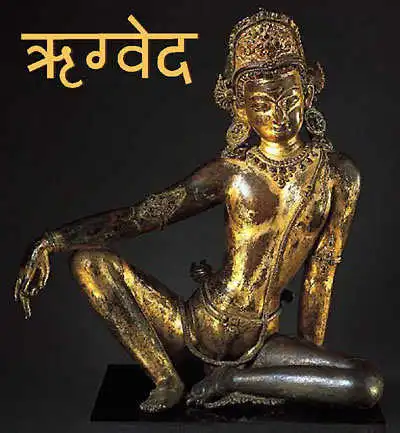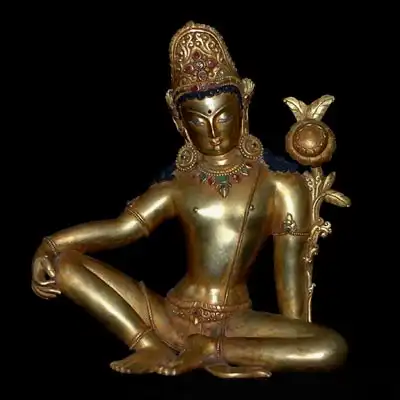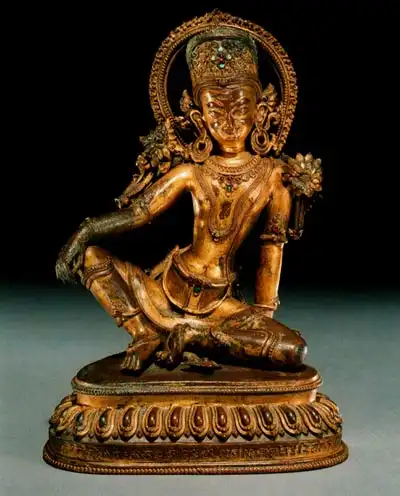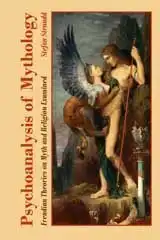
The Creation in Rig Veda 10:129Conclusions about the Hymn
Some Conclusions about Rig Veda 10:129The Rig Veda 10:129 creation hymn may very well be the most famous of all the Rig Veda hymns, at least internationally. It is regarded as obscure, although its punch line is quite obvious. Here are some conclusions I make after studying the aforementioned seven English versions of it.
The hymn starts by stating that not even nothing could have existed before the world emerged. Therefore it can't come as a surprise that the hymn ends by suggesting that no one can know how the world was created. No one born out of the creation can know what that primordial state was like. According to the hymn, it's not even sure that its maker — if there is one — can know it. That's almost saying there wasn't a maker, since a conscious creator must have known.
Like Big BangThis would be very much in line with our present understanding of the birth of our universe in the Big Bang, where also the time we experience started. So there was no before, really, and therefore nothing to be known about it. And certainly, the Big Bang theory leaves no room for a conscious creator.But the Rig Veda 10:129 hymn was composed some 3,000 years ago. At that time, in India as well as anywhere else, the idea of a creation without a creator would be very radical, if not absurd. Well, that's what we surmise about our ancestors. Upon close examination, it's not only this Rig Veda hymn of that distant past seeming to consider the idea of a creation without a conscious and active creator. Already primordial man, back at the dawn of our species as we know it, must have found many things in nature happening without any sign of someone making it so. People back then would not have regarded natural events as some sort of machinery, before we were able to invent our own. But a world where much happened without any willful interference must have been possible for them to conceive. That might even have been what they regarded as the normal state of things. It is not at all unthinkable that the personification of natural forces into some hidden deities, of which mythologies are full, was introduced later in human history. If so, it was probably as a way of trying to deal with the unpredictable strikes of fate. The belief in deities led to worship of them, which was to quite an extent an effort of pleasing them and thereby fate. Be that as it may, and we can only guess about it, but Rig Veda 10:129 can certainly be interpreted as suggesting a creation by impersonal forces. It even says that creation was inevitable, because of the primordial state being impossible. That's announced already in the first line of the hymn. There was neither existence nor non-existence, which is impossible. So, both had to appear. Something had to exist in order for nothing to exist as well, and vice versa. A state with none of them just could not be. The world burst out of necessity.
How Can the Poet Know?So, the first statement about the impossible primordial state fits nicely with the ending statement about nobody knowing of the world's origin. It's the stuff in between that complicates things, for the simple reason that it describes what has been declared indescribable.The hymn says that not even the gods can know how the world emerged, since they were not there at the very beginning. Not even the overseer in the highest heaven — the god of gods, so to speak — is sure to know. So how can the poet? Why does the hymn spend several verses describing the process leading to the creation of the world, when it has also stated that this cannot be known by anyone — certainly not a mere mortal? This contradiction within the hymn is as grave as can be, since it strikes at both its outset and its final punch line. Would any poet make such a blunder? I see two plausible explanations: Either we misinterpret the content of the hymn completely, or it has been altered since its original writing.
MisunderstandingStarting with the first possibility, can we misunderstand the poet's claims so fundamentally — and if so, what part of it do we get wrong? Is he not at all claiming that the way the world emerged is beyond anyone's knowledge, or is his description of that emergence not what it seems to be?The former alternative is not that likely at all, since the whole point of the hymn is its punch line statement about nobody knowing how the world emerged. Without it, the punch line loses its punch and the hymn its meaning. Furthermore, we have no problem seeing and appreciating the paradox of an uncreated world neither being nor not being. It's not a primordial state easy to imagine, but it's very easy to see how it must be beyond anyone's understanding. Both the poet and his audience would enjoy it and regard it as the hymn's major quality.
 Indra. Bronze scupture from Nepal, 20th century. So, could the hymn's description of how the world emerged be something else than that? A simple explanation would be that it starts when the world creation is well on the way and at least the One has awakened and can witness it. But that's sort of a post-creation, another time than the moment of which the hymn makes its paradoxical statements. Why would the poet make conclusions about one event and still spend verses describing another event? Also, the text of the hymn firmly suggests that the description is indeed that of the very beginning of creation, before which there was only an impossible chaos.
Primordial MysteryThe only thing that would make some kind of sense is if the hymn doesn't claim that creation is incomprehensible, but the primordial state before it began. That is the situation described by the first lines of the hymn, until the One is introduced in the second half of the second verse. Or, if we accept the idea of the One belonging to the primordial state, all the way until the last line of the third verse, where heat makes the One emerge.That's a possible solution to the problem. The poet claims that we know how the world was created, but not out of what — not what was before it. That's sort of the same problem as we have with the Big Bang theory, unable to describe what preceded the Big Bang and where that might have been — or not have been. A modern astrophysicist would totally get that message of the hymn and agree with it. It also touches the problem the philosophers of Ancient Greece discussed quite a lot: if something can come out of nothing. It makes perfect sense if the poet claims that nothing can be known about the world before its emergence. As soon as the world started to emerge, though, its process would be traceable — at least in theory. Modern astronomy has a similar limit at 10-43 seconds into Big Bang, before which it is very hard or impossible to speculate about its properties (the Planck epoch). After that very short period of time, the universe started to behave in a fashion orderly enough for calculations to describe it well. The punch line of the Rig Veda hymn might be about what was before creation, not during it. Would that be a possible interpretation of the Sanskrit text? There is nothing contradicting it in the first five verses. As for the remaining two, it is a bit unclear but the translations actually open for this interpretation. In the sixth verse, only one of the seven translators, A. L. Basham, writes "how creation happened." All the others use the word "whence," from where, which does point to the primordial state being the mystery, and not the actual process of creation. So, six out of seven versions indeed point to this understanding of the hymn. The seventh verse refers back to the sixth verse as to what the question is. Therefore, it conforms just as well to this interpretation. So, indeed, it is quite possible to interpret Rig Veda 10:129 as stating that nothing can be known about the universe before its creation, whereas a lot can be concluded about how the creation played out. Then the content of the hymn can be described like this: What was before the world emerged is impossible to know. Here is how the world emerged from that mystery — but again, what was before is impossible to know. We can all agree to that.
Later AdditionsAnother possibility is that the hymn has been edited since its original writing, by others than the original poet. That would easily enter contradictions. Some aspects of the hymn indicate it.Already when I started studying the Rig Veda 10:129 hymn, I was wondering about the clarity of its beginning and end, versus the complications in between. As mentioned above, the beginning and the end conform to the thesis that nothing can be said about the creation of the world. Still, the middle verses outline that creation, as if the poet knows it well. I have also noticed in the seven English translations treated on this website that they mainly agree on the beginning and end of the hymn, but vary much more regarding the middle, almost as if wrestling with another text. It seems that the Sanskrit original has a clarity in the first and last verses that is obscured by the other ones. That does suggest the possibility of some tangling with the hymn, after its original composition. Furthermore, there are some obvious contradictions appearing in the middle of the hymn. The most blatant one is about the primordial abyss of water. The first verse questions if there was such a thing, but the third verse states firmly that it was there. The presence of the One is a similar anomaly. In the total primordial nothing, can there really be a One, who is even breathing albeit breathlessly? The One is introduced in the second half of the second verse, as a creator to be. But except for being awakened by heat and feeling desire, the One plays no obvious role in the creation of the world. That seems to happen out of its own necessity, whether desired or not. The One — or anyone else — as a world creator is questioned in the seventh verse, and the sixth says categorically that none of the gods existed at the time when the world started to emerge. It should also be noted that the overseer in the highest heaven, mentioned in the seventh verse, is not necessarily the same as the One. Probably not, or the same term would be used for that being. There is also an odd shortness to the description of the world creation, as if intended to be more elaborate at the outset, but then stopping short and returning to the statement that nothing can be said about it. Indeed, the middle of the hymn has several inconsistencies compared to the beginning and the end.
Edited to ConformIt would not be too hard to explain why such editing took place, if that is the case. The hymn's beginning and end almost give an atheistic sense in their absence of gods. This would provoke anyone confessing to a world run by deities. That was surely the case with most people of ancient India, at the time of this hymn's writing. Maybe even more so, later on.When there is a pantheon and the worship of it, there are strong forces in that culture working to conform it to that belief. Hymns of the Rig Veda would be targets of this, certainly a hymn ignoring the role of the gods in the very creation of the world. Joel P. Brereton gives an example of addition to Rig Veda 10:129 in his text on this hymn (p. 258f), presented on this website. There is a Sanskrit version where two verses have been added after the seventh, elaborating on specific divine activity in the creation of the world. So, what's to say it has not happened to the seven verses we regard as the original Rig Veda 10:129? The extant copies of the text are far younger than the estimated period of its composition. Many things can have happened to it through the many centuries between its writing and our oldest copy of it. Actually, there could very well have been some editing of it already when it was entered into the Rig Veda collection, so that it would conform to the other hymns as well as to the cosmological beliefs of those putting together the collection.
The Hymn Stripped BareIf we edit out any description of the process of creation, including the role of the One, what remains of the Rig Veda 10:129 hymn is this (in my synthesized version):
I also removed the mentioning of gods in the sixth verse as well as the repetition of the question of its first line in the fourth. That made the first sentence of the seventh verse redundant, too. So, what is left is the complete first verse, half of the sixth and all but the first line of the seventh verse. I don't know what this does to the meter and poetic form of the hymn in Sanskrit, but this sharply shortened version makes a lot of sense in English. Its beginning explains the paradox of the primordial state, which makes it impossible to describe it — or even in what way it would lead to the emergence of the world. And that leads directly to the punch line ending of the hymn. As far as I can see, this or something like it could very well be the original content of the hymn, before pious scholars felt the need of adding a cosmogony fitting their own conviction.
Both Alternatives PlausibleSo, which one of the above alternatives is the likely explanation to the inconsistencies of the Rig Veda 10:129 hymn? Should its message be understood as only the primordial state being beyond understanding even to the mightiest of deities, or has its inconsistencies entered with verses added by others than the original poet in their effort to make it conform to their thoughts?It could be both. Since only one of the seven examined English translations disproves the former alternative, there is good reason to accept it. The hymn as we know it today points out that it is not creation that is hidden in impenetrable mystery, but whatever preceded it. Not how creation happened, but out of what.
 Indra. Gilt copper sculpture from Nepal, 1462. That would be enough to explain the hymn if it weren't for the remaining contradictions I have mentioned above. Those contradictions are to be found in the part of the text describing the process of creation. This theme is awkward in a hymn with the punch line of Rig Veda 10:129, so it does seem out of place. Why bother with a description of the creation process in a hymn about the complete enigma of whence creation came? And when doing so — why the contradictions? So, it is quite plausible that the hymn has been altered not only once and not only by one editor. Either that or a sloppy poet did a poor job with the first and only alteration.
Two Creation StoriesThere does seem to be two partly contradicting narrations of the creation colliding in this hymn. Furthermore, those two fragments of creation fit two separate types of creation myths that have many examples around the world.The first fragment of a creation story is that about the One, who is awakened by heat and immediately feels desire. The desire for company, surely, and the desire to change the original chaos into a decent habitat. That motivation in a primordial creator deity is found in many myths. A good example of this kind of creation is the Xingu myth, also presented on this website. In the beginning, according to the Xingu Indians, there was only Mavutsinim, who was all alone. He turned a shell into a woman and mated with her. But when she bore him a son, he left with the boy. The woman cried and turned back into a shell. Something similar is to be found in Genesis II of the Bible, where god creates Adam and Eve and all the animals, filling the Garden of Eden — not unlike a child playing with a dollhouse. Both creation myths suggest a world creator acting to get out of his loneliness. The One of Rig Veda 10:129 is similar, having desire immediately on becoming aware. In this mood, the One would surely hurry to create company. But nothing is mentioned of that. Instead, the Rig Veda hymn shifts to another perspective, where the One is absent.
An Impersonal CreationThe second fragment of a creation is quite different in nature. It is impersonal, with the bond between existence and non-existence causing a cord to divide the primordial chaos into an above and a below. This is rather abstract, but again not that far from the cosmogony of several other creation myths. Ancient cosmological myths are far from only filled with spectacular deities acting from very human incentives.It also has to be remembered that many deities in old mythologies are representatives of natural forces. So, even a creation story full of active deities can be seen as forces of nature causing this and that to happen, without any initial conscious will to dictate it. This possibility must be considered also regarding the One of Rig Veda 10:129. The mysterious primordial being, described so sparsely, could very well be the personification of a natural force, or a certain characteristic the primordial state must have in order for the world to emerge from it. Aristotle would say that the primordial state would need to contain a cause, or there would be no effect of it. The One is hinted as the primal cause leading to creation, to be compared to Aristotle's unmoved mover. This ancient way of reasoning deserves another example, which is that of the sun. Its effect on earthly life is obvious and abundant. Mythologies turning it into a divine creature with its own eventful past must have come much later than mankind's awareness of the sun and the effects of its light. Also the worship of it must have been something evolving by time, maybe at first as little more than what we do when we greet the morning and hope for sunshine. Most deities in most if not all mythologies are linked to natural forces, celestial bodies and so on. They are symbols of these natural phenomena. Often in the myths their adventures represent natural events in an effort to explain them, or maybe just to play with them. Comparing again to the Bible, Genesis II explains how the serpent lost its arms and legs, so it had to crawl forever on its belly. Mythologies are full of such explanations, and so are folk tales of much later origin. We should not take for granted that these stories already at their invention were firmly held beliefs. Many of them could simply be playful figments of the imagination, pure entertainment not meant to be taken seriously. Nocturnal storytelling by the fire.
Ancient AbstractionsOf course, there was also a search for explanations of the world and all its phenomena. Where did it come from and why did things behave as they did? These questions often found answers proving advanced abstract thinking, such as that of the world emergence in Rig Veda 10:129.I would say that abstract conceptions of the world creation are likely to be older than those involving deities and other characters, simply because the latter indicate further developments of the story. But there is no consensus about it among researchers of myth. A widespread assumption for the last two hundred years of the study of myths has been that the more personal the forces at work are, the older the myth is. I seriously doubt that. As for Rig Veda 10:129, I would be inclined to regard the more abstract second fragment of creation to be the older one, and the short part about the One being of later invention. Whatever the case, let's have a look at what the abstract version has to say.
Creation and ProcreationThe Rig Veda hymn speaks of a bond between the existent and the non-existent, a cord stretched out dividing the world into an above and a below. Seeds were shed, most likely from above, and thereby mighty powers arose below. The dynamics between the above and the below is described as will in the former and urge in the latter, though the translators have used widely different expressions.This short sketch of creation is quite recognizable. It compares well to many other creation myths. That is what should be expected, for the very simple reason that it is mainly the same world observed and the same ignorance of the scientific facts we have piled up during the last few centuries. Ancient people speculating about something as distant as the creation of the world were not thinking that very differently, at least not beneath the complexity of developed mythologies. The division into an above and a below is found just about everywhere. It is also something any human being could easily observe. Heaven and earth. The former nourishing the latter is also familiar and explained already by the obvious influence of the sun and the rain. Ancient man was well aware of earthly dependence on heavenly forces. But anyone could also see that earth contained powers of its own. There was the mighty sea, there was procreation continuously going on among plants and animals. The spark of existence may have come from the above, but its continued process was something mainly handled by all the creatures of the below. It's the difference between creation and procreation. So, the initiative was from above, but the urge to continue was below. What little is described by this fragment of creation in Rig Veda 10:129 would have made much sense to ancient man also outside India. What it describes is just the very start of creation. This short hymn would lose its character if it elaborated on what happened next. Also, its punch line would soon become irrelevant. Either the original poet of the hymn realized this and stopped short, or a later editor of the text settled for just adding the minimum of a creation process deemed necessary. My guess is the latter.
Three PoetsSo, to sum it up: I suspect that Rig Veda 10:129 is not a hymn composed in its entirety by one poet, but the work of three.The initial text would be the hymn's beginning and end, declaring that the primordial state before creation was so absurd that it cannot be understood by anyone — not even by the creator of the world, if there was one. Another poet added the lines about the One, implied to be the creator of the world, probably to conform the hymn to the cosmological belief of that poet. A third poet had an alternative view on creation, seeing it as an impersonal process out of necessity, and made that addition to the hymn. The third poet's addition could very well have been made before the lines about the One. The abstract thinking of that addition is much more in line with the original poet's perspective — so much that I would even consider the possibility that those lines were also written by the original poet. What sticks out the most is the part about the One. That implies a primordial and superior deity, which would explain why a later editor felt the need to include it. It would be an editor worshipping that deity. We have many examples of such revisions of old myths. It happened in Enuma Elish, presented on this website, where the Babylonian god Marduk was replacing older ones as the highest deity and also given a prominent role in the creation. Something similar was done with Yahwe in the Bible, doing away with the pantheon of older gods in the Middle East. India, with its great complexity of deities and myths as well as its long history of thought, must have several examples of the same. Rig Veda 10:129 is likely to be one of them.
The Creation in Rig Veda 10:129The Creation in Rig Veda 10:129The Paradox of Origin
MENUCreation Myths Around the WorldHow stories of the beginning began.
The Meanings of MythologyTheories through history about myth and fable.
Archetypes in MythsThe mythological symbols and what they stand for.
The Logics of MythPatterns of creation.
ContactAbout Cookies
CREATION MYTHS IN DEPTHCreation in Rig Veda 10:129The paradox of origin, according to an Indian myth.
Genesis 1The first creation story of the bible scrutinized.
Enuma ElishThe ancient Babylonian creation myth.
Xingu Creation of ManThe insoluble solitude of gods and humans.
ON MY OTHER WEBSITESPsychoanalysis of MythWhat Sigmund Freud and C. G. Jung thought about myths, their origins and meanings.
Myth of CreationAn introduction to the subject of creation myths and the patterns of thought they reveal.
Cosmos of the AncientsWhat the Greek philosophers believed about the cosmos, their religion and their gods.
Life EnergyThe many ancient and modern life force beliefs all over the world explained and compared.
TaoisticTaoism, the ancient Chinese philosophy of life explained. Also, the complete classic text Tao Te Ching online.
|
 Archetypes of Mythology
Archetypes of Mythology Psychoanalysis of Mythology
Psychoanalysis of Mythology Cosmos of the Ancients
Cosmos of the Ancients Life Energy Encyclopedia
Life Energy Encyclopedia Sunday Brunch with the World Maker
Sunday Brunch with the World Maker Fake Lao Tzu Quotes
Fake Lao Tzu Quotes Stefan Stenudd
Stefan Stenudd